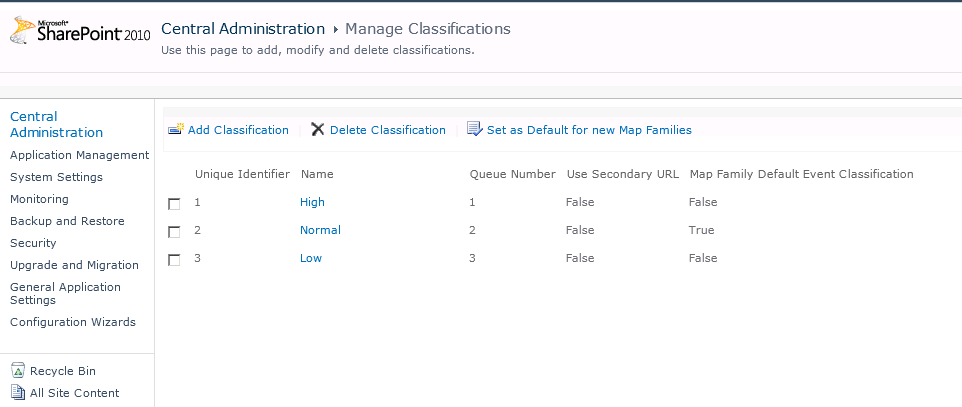Prioritizing Replication Events
September 2023
Classifications are the means by which priority queuing is set up. This Knowledge Base article details information about Classifications and how they can be used to prioritize replication events. Furthermore, it will describe how classifications can be customized, through the use of the Manage Classification page, accessed through Central Administration, and how they can be applied via the Map Family settings and the application of Rules.
The following table details the ways in which prioritizing replication can be customized and applied in various scenarios.
|
Type of Prioritization |
Action |
|---|---|
|
Prioritize one list item or document ahead of another in the same list or library. |
Create a rule with conditions that identify the list and list item and an action to change the classification of matching items. |
|
Prioritize the contents of one list or library ahead of other lists or libraries. |
Create a rule with a condition identifying the list and an action to change the classification of matching items. |
|
Prioritize the contents of one web site ahead of other web sites in the same web application. |
Disable replication for the specific web site's Replication Map. Then create a new Map Family specifically for that web site with a different default classification. |
Map Family Classification Setup
Classification Overview
The manage classifications page is accessed from the Central Administration Application Management page. This page details all the classifications that have been configured for a web application. The default classifications are High, Normal and Low. Normal is designated as the default event classification for all map families.
Classifications work to form queues for replicated items. The queue number identifies a unique queue that is processed independently from the other queues. Items in each queue are processed in the order they occur, but you can change this ordering by changing the queue for specific events.
Queue
Queues can be likened to service lanes in an airport. There is the regular check-in lane, the equivalent of the Normal classification, and there is the express lane for elite members, the equivalent of the High classification. Since most events use the default Normal classification, the other queues have relatively fewer events. A new event entering a shorter queue is more likely to be processed and transferred earlier than if it entered the default queue.
Map Family Classification Setup
The default event classification is set up at the Map Family configuration level. This classification is then assigned to all events that occur within this map family. The default classification is Normal, which is queue number 2.
To change the classification for an event from this default event classification, a rule must be created. A rule can be created in order to assign a classification of High, which is queue 1, or classification of Low, which is queue 3, to any specific event which you do not want to behave at the defaulted Normal classification level.



